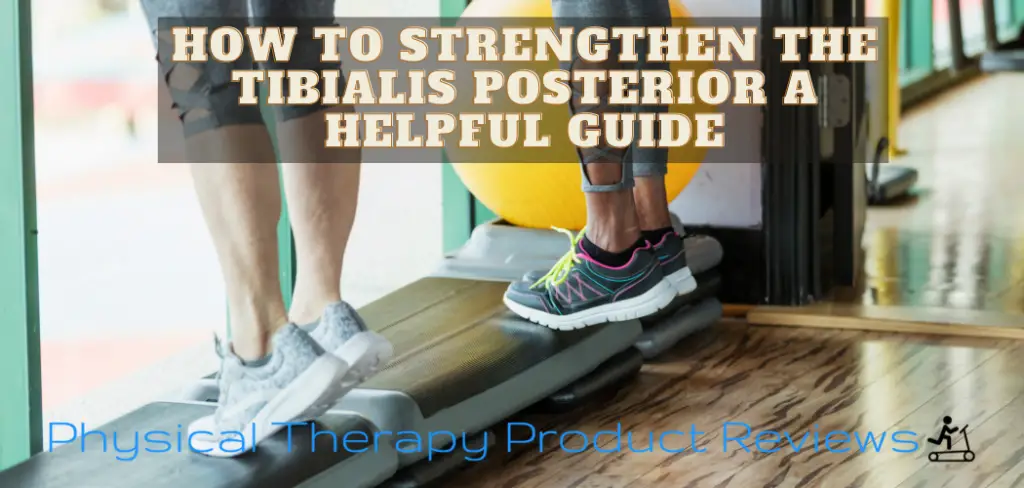The body is a complex arrangement of muscles, tendons, and joints. Repetitive stress can play a wicked toll upon any number of these structures, causing pain that is limiting and frustrating. Runners know this all too well!
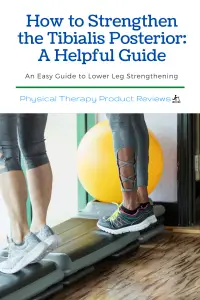
The Tibialis Posterior is a muscle that plays an important role in maintaining a healthy arch and stable ankle. The constant impact that running exerts on the lower extremity can leave it susceptible to injury. If you experience flat feet or instability, use this guide to help strengthen your tibialis posterior.
The Tibialis Posterior
What is it?
The Tibialis Posterior is a thin muscle in the back of your lower leg, underneath your Gastrocnemius. It originates on the upper part of the Tibia, near the back of your knee.
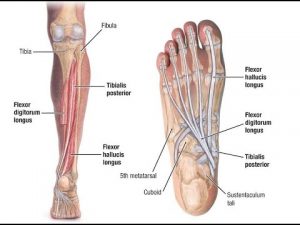
About the size of a feather, it tapers to a long tendon that wraps behind your inner ankle bone and attaches to the top of your arch.
When runners experience pain in their Tibialis Posterior, it can manifest in the arch of the foot or just behind that inner ankle bone and extend up the back of the leg.
Functions of the Tibialis Posterior
The main function of this muscle is to invert the ankle – that is, turn the foot inward. It also aids in plantarflexion or pointing the toes. Secondarily, the Tibialis Posterior supports the arch of your foot.
Your arch structure is important for absorbing the shock of impact activities, providing a coil-like effect of energy return for your step, and evenly distributing weight across your sole.
Why is it Important for Runners?
Dysfunction of the Posterior Tibialis can lead to over pronation while walking and running and even a fallen arch. Weakness can lead to excessive fatigue, which, in turn, leads to poor form, destabilization, and injury risk.
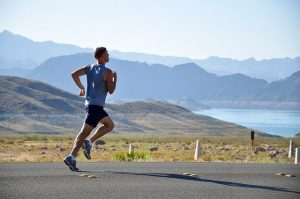
Specific training of the muscles that support the foot and arch can positively affect running performance and biomechanics. Proper function of the Tibialis is especially important for runners that go long distances or run on unstable surfaces like trails.
Related Posts:
- The Best Core Strengthening Exercises for Runners
- 5 Great Exercises to Strengthen the Soleus
- The Best TRX Exercises for Runners
Strengthening Exercises for the Tibialis Posterior
Jump Rope!
Regular utilization of plyometric exercises like jumping rope has been shown to significantly improve arch stiffness and thus running ability, jumping performance, and reactivity.
The Tibialis Posterior is one of the most important muscles for jumping and landing in the lower leg. Plus, if you haven’t jump roped in a while, it’s quite the workout!
Complete 5 minutes of jump rope training in replacement of your pre-run workout 2-4x/week.
Single Leg Balance
In a balance-challenged position, your foot has to work hard to keep you upright and maintain its stability. The Posterior Tibialis is a highly active muscle during balance work.
If standing on a single leg on a stable surface is easy for you, advance the exercise by using a:
- Foam pad
- Wooden balance board
- Bosu ball
- Or, complete a secondary activity while balancing, like a ball toss or resistance band work.
One of our favorite ways to work the Tibialis Posterior in a single-leg balance position to doing a cone touch exercise.
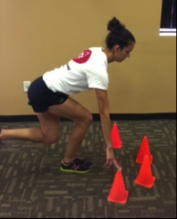
Place a semi-circle of cones around you and see how many cones you can touch in a 30-second time frame. The goal is to drive your knee forward while balancing to really get the Tibialis Posterior working.
Eccentric Ankle Inversion
Sit down in a chair and cross one ankle over your knee. Your leg will stay in this position for the exercise. Place a resistance band loop around your foot positioned on the floor, then around the ball of your foot that is raised. You will feel the band pulling your raised foot downward.
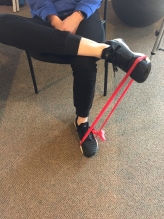
Against the resistance of the band, pivot your ankle inward to raise your toes higher – you can use your hands to lift your foot into this position. Release your hands and control the descent of your foot slowly back to the starting position.
Complete 15 reps and 3 sets.
Eccentric Heel Raises
Stand with your heels off the edge of a small step. Use a handhold for balance if needed. Raise up on your toes quickly, then slowly lower back to the start.
We also like to do a variation of this exercise using a tennis ball between the ankle bones to target the Tibialis Posterior even more.
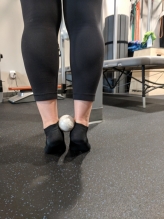
Complete 20 reps and 3 sets.
Advance this exercise:
- After raising up to your toes, lift one foot to come to a single leg stance and complete the lower on one leg.
Tips for Dealing with Tibialis Posterior Pain:
Try the following things for alleviating symptoms in a painful tibialis posterior.
- Foot Orthotic with arch support: as a temporary measure for painful walking.
- Calf stretch: in the lunge position, with your hands resting on a surface like a wall or back of a couch, stretch with your back leg straight, then bent.
- Taping: There are a few different ways that you can tape your ankle to help support the Tibialis Posterior.
- Here is one example of using KT tape
- Here is an example of using athletic tape
Conclusion
The Tibialis Posterior is an important muscle for athletes, especially during impact activities. Maintaining strength in this structure is a key component to a strong and stable ankle. May this guide help you strengthen your lower extremity and bless you with more reps and extra steps!
References:
Gomez-Jurado I, Juarez-Jimenez JM, Munuera-Martinez PV. Orthotic treatment for stage I and II posterior tibial tendon dysfunction (flat foot): a systematic review. Clinical Rehabilitation. 2021; 35(2):159-168.
Holowka NB, Richards A, Sibson BE, Lieberman DE. The human foot functions like a spring of adjustable stiffness during running. Journal of Experimental Biology. 2021; 224(1).
Kulig K, Lee S, Reischl SF, Noceti-DeWit L. Effect of posterior tibial tendon dysfunction on unipedal standing balance test. Foot & Ankle International. 2014.
Martin RL, et al. Ankle stability and movement coordination impairements: lateral ankle ligament sprains revision. Journal of Orthopaedic & Sports Physical Therapy. 2021; 51(4): CPG1-CPG80.
Pinillos FG, Fuentes CL, Roman PAL, Vallejo AP. Jump-rope training: improved 3-km time-trial performance in endurance runners via enchanted lower-limb reactivity and foot-arch stiffness. International Journal of Sports Physiology and Performance. 2019; 15(7): 1-7.
Ross MH, Smith MD, Mellor R. Vicenzino B. Exercise for posterior tibial tendon dysfunction: a systematic review of randomized clinical trials and clinical guidelines. British Medical Journal Open Sport and Exercise Medicine. 2018.
Taddei UT, Matias AB, Ribeiro FIA, Bus SA, Sacco ICN. Effects of a foot strengthening program on foot muscle morphology and running mechanics: a proof of concept, single-blind randomized controlled trial. Physical Therapy in Sport. 2020; 42:107-115.
Disclaimer: The information provided in this post is for educational purposes only. This is not a substitute for a medical appointment. Please refer to your physician before starting any exercise program.
